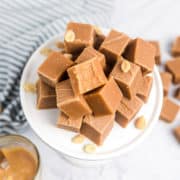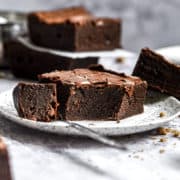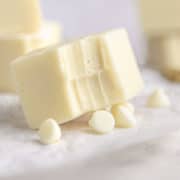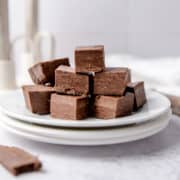Bok choy, sometimes spelled as pak choi, are delicious leafy greens that are amazing in stir-fries and a variety of other dishes.

Jump to:
Fresh bok choy can be found in just about every Asian market as well as most grocery stores. Discover how to store bok choy so you can keep it fresh for longer and enjoy this flavorful vegetable often.
I really like this Chinese cabbage, both regular and baby bok choy. They're so easy to throw into a wok with some other veggies and meat, along with a splash each of soy sauce and sesame oil, for a quick and easy weeknight dinner.
Their crunchy texture is just so good. They're also pretty good halved, drizzled with oil, and roasted in the oven, and I especially love how they come out with wonderfully crispy edges!
Try bok choy in soups or stir fries, or enjoy it roasted in the oven, steamed in a steamer basket, or sautéed in a little oil. It's also good in Chinese dumplings and wontons.
I usually buy the baby ones which come in packs of three or four, but the larger bok choy is also nice and makes a good sub for Napa cabbage if you can't find that.
What is Bok Choy?
Bok choy (Brassica Rapa Chinensis), is part of the cabbage family and is in the same cruciferous vegetable category as Brussels sprouts, broccoli, and kale. This type of Chinese cabbage, which is sometimes spelled as pak choi in the UK is also sometimes known as Peking cabbage, Chinese savoy, white Chinese cabbage, Chinese mustard cabbage, Chinese chard, or spoon cabbage.
Bok choy originated in China some 5,000 years ago and has been cultivated there since 400 AD. From there it spread to Japan, Vietnam, Korea, and other parts of Asia, which is why it's such a popular Asian cuisine staple. It was brought to North America in the 1800s. You can find it throughout the year although this vegetable is better during cool seasons.
It has thick, crunchy white stalks and thin green leaves that cluster up from the base, both of which are eaten. The leaves are a bit like romaine lettuce in texture. As for the flavor, it's a bit like a cross between water chestnuts and spinach but slightly peppery and also a little sweet.
The leaves have a stronger taste than the stem. It's a nutritious choice, and is high in Vitamins A, C, and K, as well as the electrolytes potassium, calcium, and magnesium.
The cooking process is simple. You can stir fry, steam, or boil it for about 3 minutes (double that if you're steaming a whole bok choy). I like to cook the stems first and add the leaves later since the thick stalks cook more slowly.
You can eat it raw or dry it to make preserved bok choy which is sweeter and saltier than when fresh. The most tender and sweetest leaves and stems come from immature plants known as baby boy choy.
There are two different types of bok choy: white bok chok and Shanghai bok choy. The white type often costs a little more and has dark leaves with a crinkled texture, while the Shanghai variety is the one you usually find at the grocery store and this one has light green, spoon-shaped leaves with light green rather than white stems. It's not quite as crisp as the white variety and can get slimy if you cook it for too long.
You can substitute one kind for the other in most bok choy recipes, or substitute tatsoi (rosette bok choy) or chard, although chard is more watery than bok choy. This vegetable pairs with bold Asian flavors such as ginger, garlic, and soy sauce.
You don't have to use it in Chinese recipes though. Try drizzling olive oil over it, grinding on a little salt and pepper, and roasting it in the oven.
How to Choose Bok Choy
Look for a vibrant, fresh-looking bunch with uniform bright green or dark green leaves and no holes, damage, wilting, or yellowing. Also, choose the right size depending on how you're going to use it, for example choosing baby bok choy if you want to eat it raw in a salad or a larger bok choy if you're making a big batch of stir-fry.

How to Store Bok Choy
It isn't hard to store bok choy but since it's a green leafy vegetable it isn't going to last that long. This means it's worth finding out more about how to store bok choy so it stays fresh until you use it.
- If you'll be eating it the same day you buy it, it will be okay at room temperature for a few hours.
- Keep bok choy fresh for up to a week in a perforated plastic bag in the crisper drawer of your refrigerator.
- Don't wash it before storing it in the fridge.
- You can also freeze it.
- To freeze bok choy, blanch it for a couple of minutes in boiling water, then drain and plunge it into an ice bath to stop the cooking process.
- After that, rinse off the excess water and flash freeze on a baking sheet.
- Next, transfer the partially frozen bok choy into an airtight container or Ziploc freezer bag for up to 3 months.
- Squeeze the Ziploc bag before sealing it to get rid of the excess air in there.
- Thaw frozen bok choy in the refrigerator overnight or, if you're making something like soup or a stew, you can add it frozen and it will thaw fairly quickly in the dish.
When you're ready to use it, wash the stems and leaves in cold water, ensuring you check the stalks carefully for any dirt or mud stuck in the ridges, then chop it up using a sharp knife.
How to Identify Spoiled Bok Choy
Indicators of spoilage include the bok choy having yellow or brown spots, wilted leaves, or mushy parts.
If it is only just past its prime you can remove the damaged parts and eat the rest, but if it smells bad, is mushy in more than a couple of small places, or is very floppy and wilted, it's best to toss it out rather than risk getting a bad tummy.
Obviously, if you see any mold on it, throw it out immediately.
Common Questions
Although it's not as common as cooked bok choy, it can be eaten raw and baby bok choy is good in salad recipes. Just ensure you clean it well if you're going to serve it raw. As for the flowers, they are also edible but since a lot of cabbage family plants can have slightly bitter-tasting flowers, you might prefer to avoid plants that have tall flower stalks or which have produced a lot of flowers.
Bok choy comes in different sizes. The smallest is dwarf bok choy which is about 3 inches long. They're nice as salad greens and sweeter than the larger varieties. Next up you have baby bok choy which grows up to 5 inches long and can be served as an individual vegetable with main dishes. They also look great halved lengthwise in soups.
Larger than baby bok choy is medium bok choy which is around 7 inches long. You can separate out the leaves to cook because they're a bit big for serving whole or halved. These aren't usually labeled and are typically just sold as regular bok choy. The biggest kind can grow up to 12 inches long and these have the strongest taste. They're great in recipes that need chopped bok choy, such as soups, stir-fries, stews, dumplings, and so on.

Curious Facts
- Bok choy is Cantonese Chinese for "white vegetable" which I find a bit strange because it's mostly green. The Mandarin Chinese term does mean green vegetable though!
- This vegetable is harvested in the cooler hours, such as early in the morning, to make the leaves less liable to wilting.
Bok choy is the most eaten vegetable in the Brassica family in China, but these days it's exported and enjoyed all over the world.














